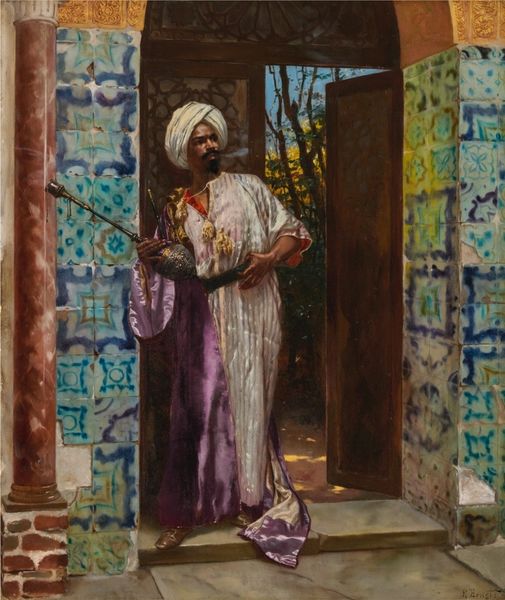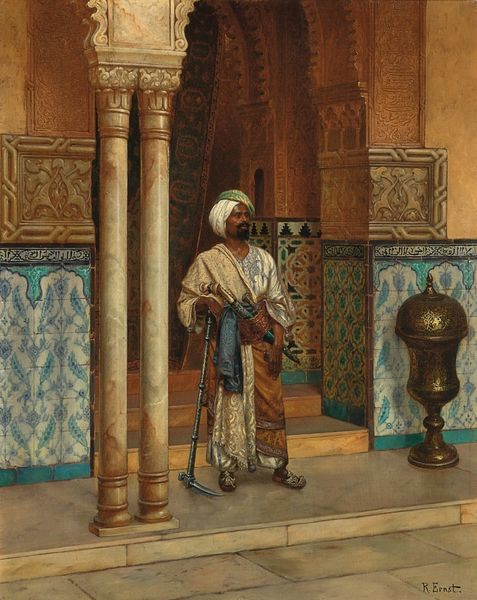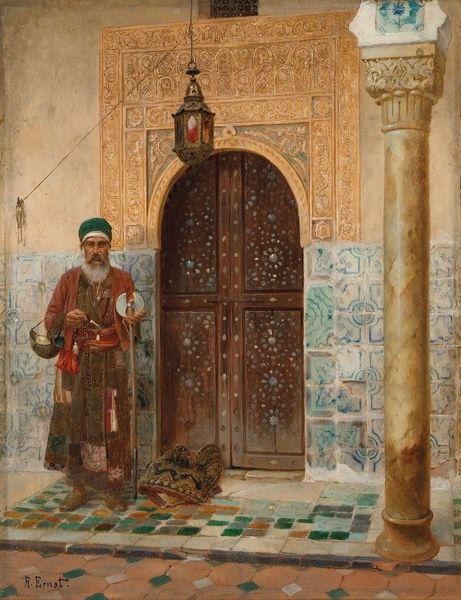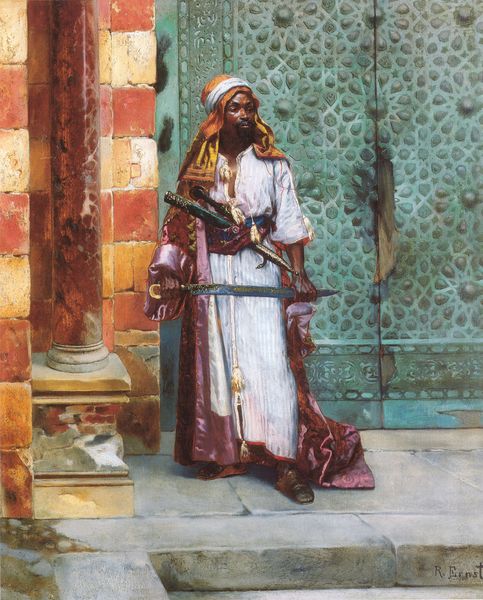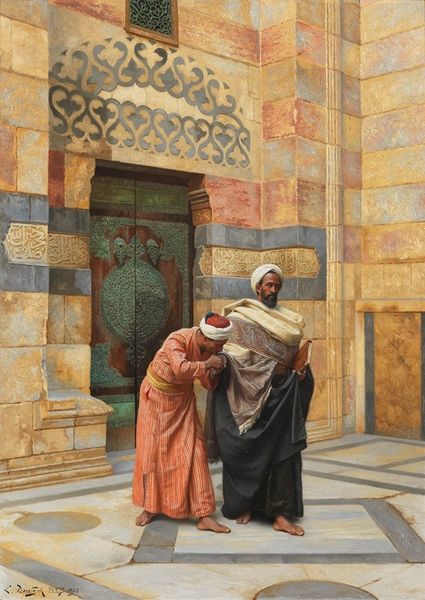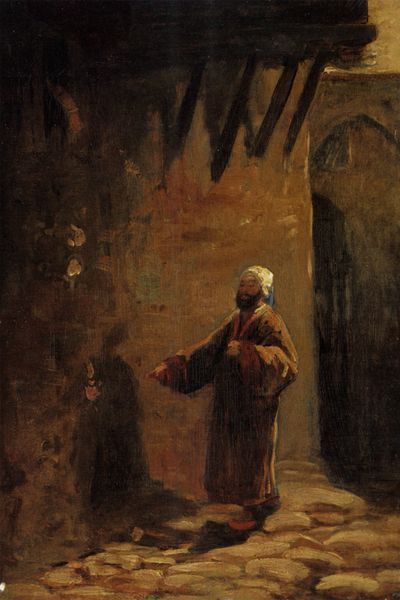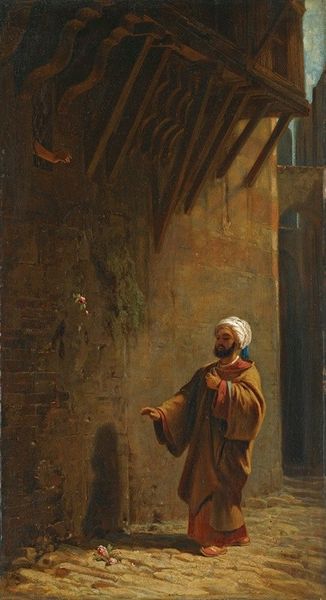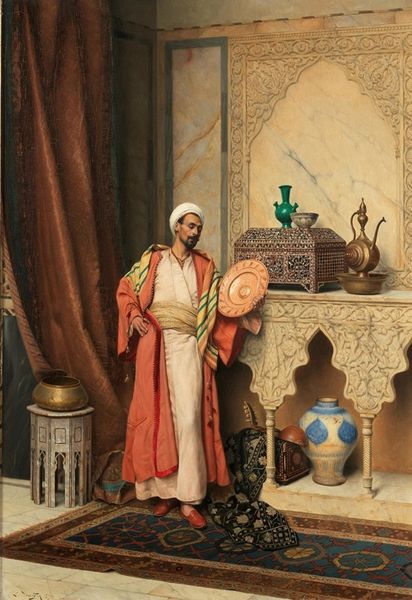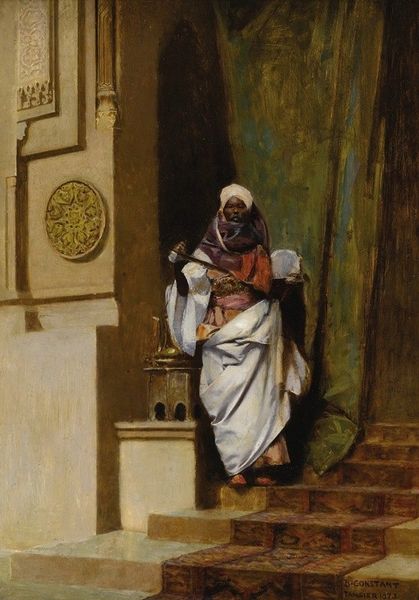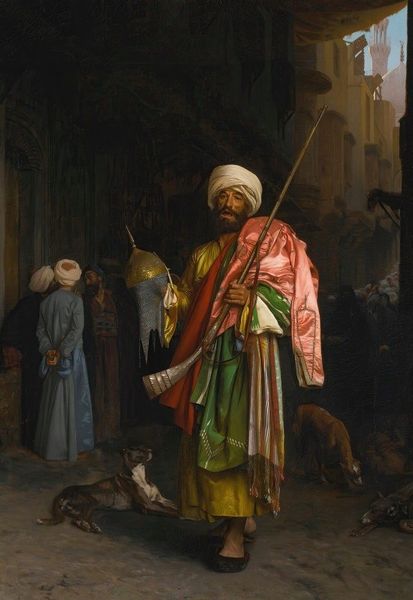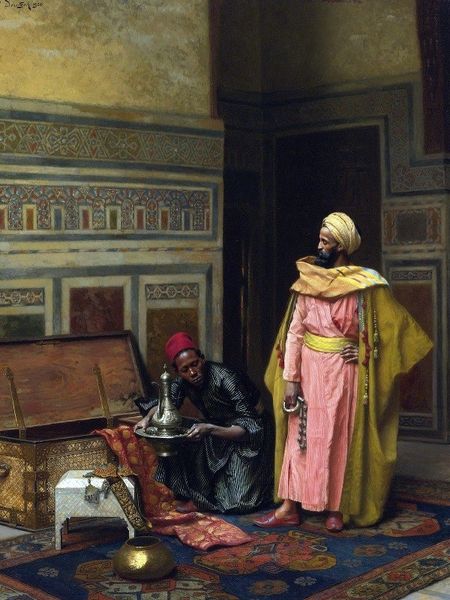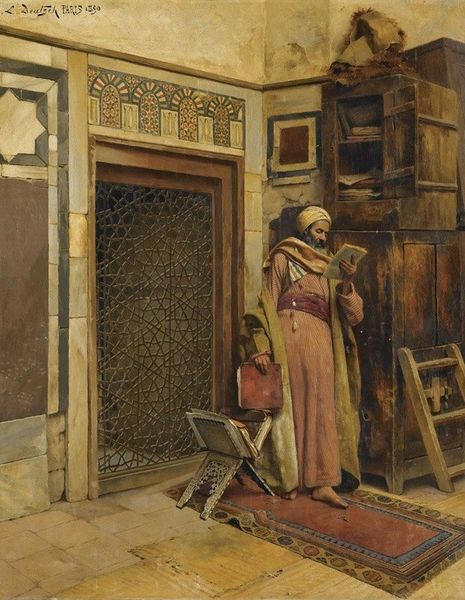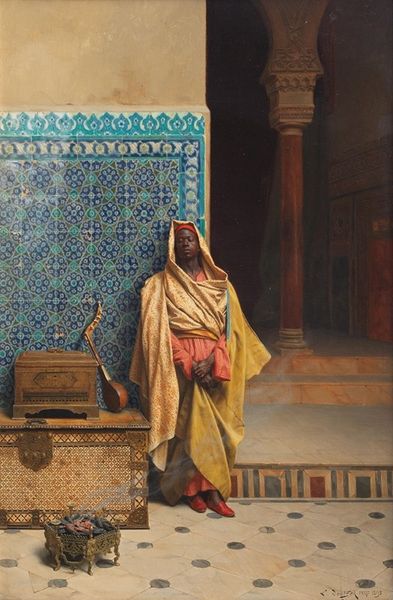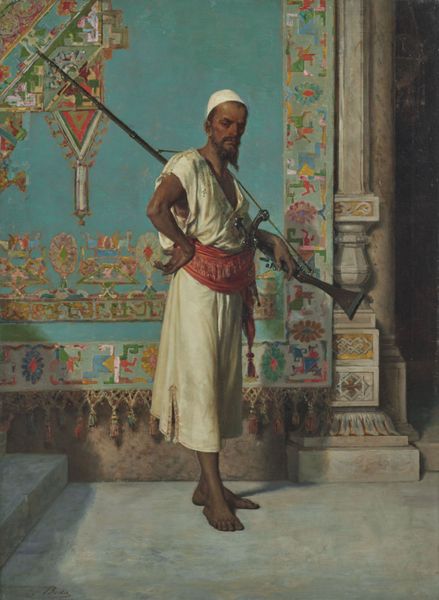
Copyright: Public Domain: Artvee
Ludwig Deutsch painted “At the door of the mosque” sometime around 1900, using oil on panel. It depicts a man in traditional Islamic dress, standing in prayer outside a mosque. Deutsch was one of many European artists who made paintings of the Middle East during the late 19th and early 20th centuries. These Orientalist paintings often presented romanticized or idealized views of Islamic culture. Here, Deutsch focuses on the man's piety, rendering the architecture with careful detail, emphasizing a sense of timelessness. But what was the role of such images in their own time? We might consider the growth of European colonialism and the desire to understand and perhaps exoticize foreign cultures. Or we might explore the development of museums and the art market, which created a demand for such images. Understanding the painting fully means understanding its historical and institutional context. We can consult period travel writing, museum archives, and the writings of art critics. In doing so, we recognize that art’s meaning is not fixed but is deeply connected to the society and the institutions in which it was made and viewed.
Comments
No comments
Be the first to comment and join the conversation on the ultimate creative platform.
